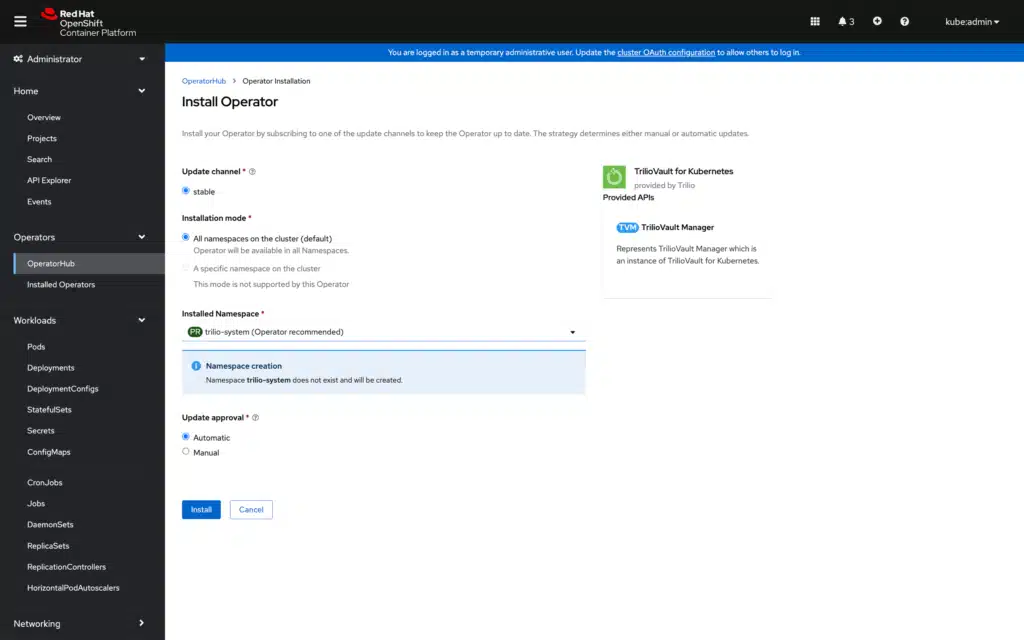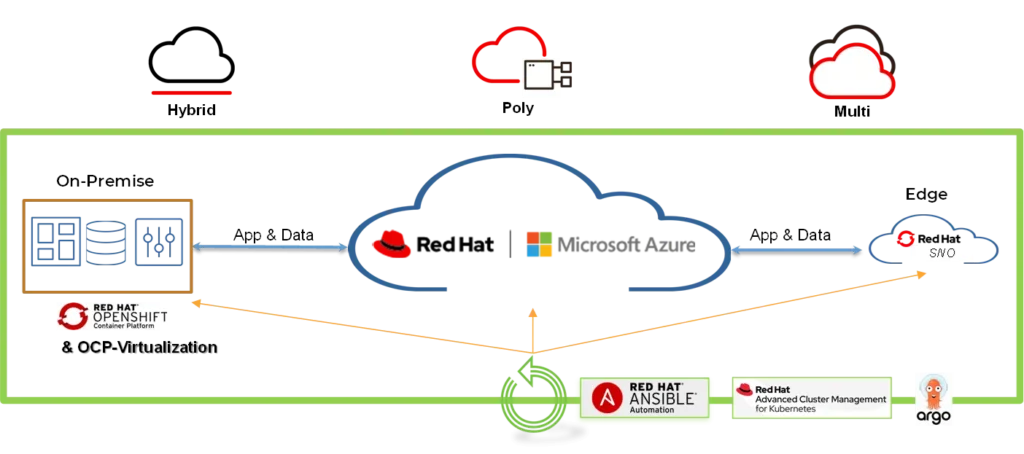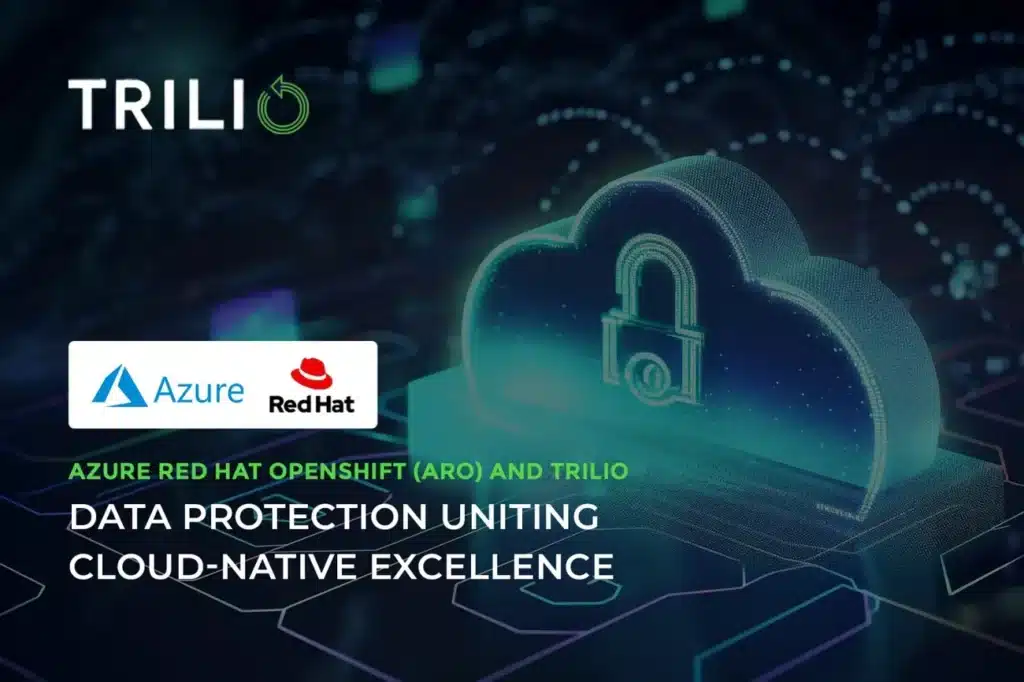Intro
With the exponential growth of cloud adoption and the widespread shift to Kubernetes as the de facto orchestration platform, Red Hat OpenShift emerges as a leading solution. Coupled with the robust cloud infrastructure of Microsoft Azure, Red Hat OpenShift on Azure (ARO) is a managed service that offers OpenShift clusters on Microsoft Azure. It is jointly engineered and operated by Microsoft and Red Hat with an integrated support experience. Now, by adding Trilio’s certified Operator-based Trilio for OpenShift solution, enterprises can achieve the scalability and operational efficiency of ARO with the Operational Resiliency that Trilio natively provides.
Why Red Hat OpenShift on Azure?
This fusion of Trilio for OpenShift and Red Hat OpenShift on Azure empowers businesses to effortlessly build, deploy, and manage resilient containerized applications across hybrid cloud environments at scale, fostering an environment ripe for innovation and expansion. According to Red Hat, ARO empowers organizations with numerous benefits. Here are a few benefits Red Hat mentions of using ARO over other solutions:
Managed Service Advantage
ARO provides a fully managed Kubernetes service, alleviating the burden of cluster management and infrastructure maintenance. This allows organizations to focus more on developing and deploying applications rather than managing the underlying platform. By removing the need for developers to maintain application development infrastructure and reassign DevOps teams to more productive work, organizations could streamline operations organizations receive enhanced operational consistency, efficiency and security. (One study by Red Hat found a 50% reduction in infrastructure management effort).
Hybrid Cloud Flexibility
Named a Leader in 2023 Gartner® Magic Quadrant™ for Container Management, ARO provides a consistent OpenShift experience across hybrid cloud environments. The solution seamlessly integrates with Azure’s extensive portfolio of cloud services, facilitating hybrid cloud deployments. Organizations can extend their on-premises OpenShift deployments to ARO or implement a multi-cloud strategy, maximizing flexibility and scalability.
Enterprise-Grade Security
ARO offers comprehensive security controls, including identity and access management, network policies, and compliance certifications, ensuring regulatory compliance. Azure Red Hat OpenShift is also generally available on Microsoft Azure for U.S. Government.
Scalability and Performance
With Azure’s global network of data centers and infrastructure scalability, ARO offers high availability, fault tolerance, and superior performance for mission-critical applications, enabling organizations to scale resources dynamically based on demand. Now developers can focus on building and scaling applications (not infrastructure) that add value to the business. (according to Red Hat users saw 60% to 70% reduction in development time)
Cost Efficiency
ARO eliminates the need for upfront infrastructure investments and reduces operational expenses associated with managing Kubernetes clusters, improving cost predictability and financial efficiency. From a licensing perspective, ARO provides a pay-as-you-go pricing model, allowing organizations to optimize their IT spending by only paying for the resources they use. Additionally,
An Azure Red Hat OpenShift cluster consists of 3 master nodes and 3 or more worker nodes. Master and worker nodes run on Azure Virtual Machines, billed at Linux VM pricing. Worker nodes have an additional cost for the OpenShift license component. Compute, networking and storage resources consumed by your cluster are billed according to usage. Customers can use on-demand pricing, or reserved instances, whichever best meets the need of their workload and business. For more information on ARO pricing and to explore ARO pricing options, click here.
Integrated Ecosystem
ARO integrates seamlessly with Azure services such as Azure Active Directory, Azure Monitor, Azure Policy, and Azure DevOps, providing a comprehensive ecosystem for application development, monitoring, governance, and CI/CD pipelines, streamlining the development and accelerating deployments.
Trilio Deployment in ARO
When deploying OpenShift on Microsoft Azure, it’s crucial to consider data protection. While managed services like Azure Red Hat OpenShift (ARO) simplify deployment and management, they don’t inherently safeguard your application data and metadata. In fact, cloud providers follow a “Shared Responsibility Model,” placing the responsibility for data protection squarely on you. This is where Trilio for OpenShift comes into play. Trilio offers application-level backup and recovery for OpenShift, ensuring your data’s safety and mobility across any environment. So, when deploying OpenShift on Azure, consider Trilio for robust data resilience and peace of mind.
With our easy to use end to end documentation Getting Started with Trilio on Red Hat OpenShift (OCP) you can easily install Trilio from the OperatorHub, and start using immediately. You can license it from the Azure Marketplace or you can reach for us by clicking Contact Trilio.

To help you quickly adopt and appreciate these benefits, Trilio provides application mobility and migration capabilities allowing for the swift movement and migration of your cloud-native application onto services like ARO. With capabilities such as these, the power of multi-cloud is achievable and operationally attainable.
As operational resilience remains a cornerstone for modern enterprises, particularly in the face of unforeseen disruptions or cybersecurity threats, Trilio equips ARO users with built-in capabilities for disaster recovery and ensures continuous operations even amidst adversity. In this blog post, a colleague of mine, Rodolfo Casas, writes and demonstrates the ability to move and migrate applications into ARO from another Red Hat cloud managed service (Red Hat OpenShift Service on AWS or ROSA). In this use case, ARO is used as a Disaster Recovery cloud. The take-away here is that Trilio’s capabilities empower you to move applications from other clouds or distributions into ARO seamlessly and as needed.

With Trilio and ARO, businesses can safeguard their containerized workloads with application-consistent backups, granular recovery options, and policy-based automation, ensuring data integrity and regulatory compliance across hybrid cloud environments. Harnessing Azure’s array of compliance certifications alongside Trilio’s data protection solutions, organizations can implement robust backup and recovery strategies to mitigate the risk of data loss or corruption.
If you would like to read about a Trilio / ARO success story, please check out this case study: Major FSI Chooses Trilio for Kubernetes for ARO workload protection
Trilio Deployment in ARO
The convergence of Trilio’s data protection capabilities, and Azure Red Hat OpenShift (ARO) offers a robust foundation for building and managing cloud-native applications. Together, Red Hat, Microsoft Azure, and Trilio empower businesses to navigate the complexities of modern IT landscapes while ensuring the safety and availability of their critical assets, bridging the gap between on-premise infrastructure and the cloud, all while optimizing costs and improving financial efficiency. These solutions are available today at Microsoft’s Azure Marketplace.









